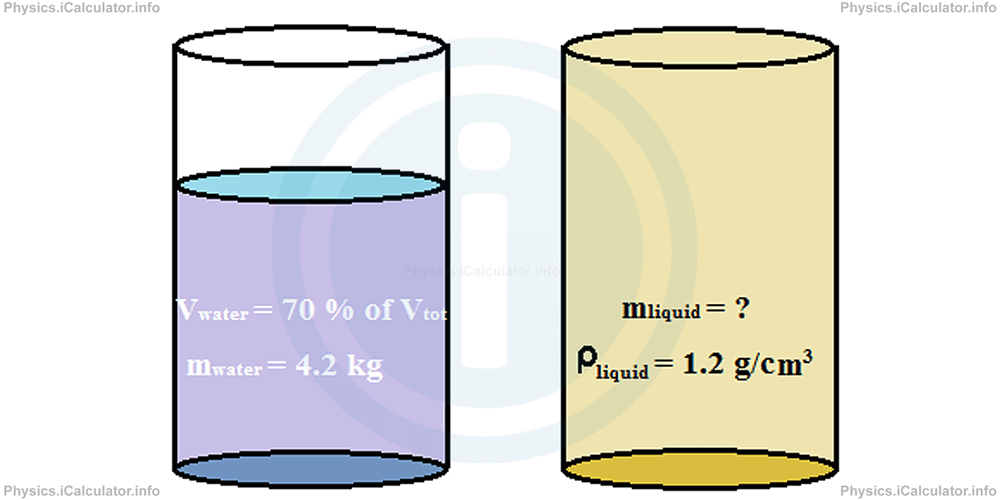Menu
Fluids. Density of Fluids
Please provide a rating, it takes seconds and helps us to keep this resource free for all to use
The following physics revision questions are provided in support of the physics tutorial on Fluids. Density of Fluids. In addition to this tutorial, we also provide revision notes, a video tutorial, revision questions on this page (which allow you to check your understanding of the topic) and calculators which provide full, step by step calculations for each of the formula in the Fluids. Density of Fluids tutorials. The Fluids. Density of Fluids calculators are particularly useful for ensuring your step-by-step calculations are correct as well as ensuring your final result is accurate.
Not sure on some or part of the Fluids. Density of Fluids questions? Review the tutorials and learning material for Fluids. Density of Fluids
| Tutorial ID | Title | Tutorial | Video Tutorial | Revision Notes | Revision Questions | |
|---|---|---|---|---|---|---|
| 9.1 | Fluids. Density of Fluids |
Fluids. Density of Fluids Revision Questions
1. A massless container filled with 4.2 kg water up to 70% of its volume is shown in the figure.

Water is replaced by another liquid with density 1.2 g/cm3 which fills up the entire container as shown in the second figure. Calculate the mass of the unknown liquid.
Take the density of water equal to 1 g/cm3.
- 7.2 kg
- 6.0 kg
- 5.0 kg
- 3.5 kg
Correct Answer: A
2. What is the density of mixture if we mix 96 g alcohol and 96 g of glycerine in the same vessel?
Take ρalcohol = 0.8 g/cm3 and ρglycerine = 1.2 g/cm3
- 1.0 g/cm3
- 1000 g/cm3
- 0.96 g/cm3
- 0.98 g/cm3
Correct Answer: C
3. Why an empty balloon cannot fly and when filled with helium it flies up in air?
- Because helium helps the balloon become lighter
- Because helium has a negative mass
- Because the volume inside the balloon increases more than mass and thus the density decreases
- Because both volume and mass inside the balloon increase at the same rate bringing an increase in density
Correct Answer: C
Whats next?
Enjoy the "Fluids. Density of Fluids" practice questions? People who liked the "Fluids. Density of Fluids" practice questions found the following resources useful:
- Practice Questions Feedback. Helps other - Leave a rating for this practice questions (see below)
- Density and Pressure Physics tutorial: Fluids. Density of Fluids. Read the Fluids. Density of Fluids physics tutorial and build your physics knowledge of Density and Pressure
- Density and Pressure Revision Notes: Fluids. Density of Fluids. Print the notes so you can revise the key points covered in the physics tutorial for Fluids. Density of Fluids
- Check your calculations for Density and Pressure questions with our excellent Density and Pressure calculators which contain full equations and calculations clearly displayed line by line. See the Density and Pressure Calculators by iCalculator™ below.
- Continuing learning density and pressure - read our next physics tutorial: Pressure. Solid Pressure
Help others Learning Physics just like you
Please provide a rating, it takes seconds and helps us to keep this resource free for all to use
We hope you found this Physics tutorial "Fluids. Density of Fluids" useful. If you did it would be great if you could spare the time to rate this physics tutorial (simply click on the number of stars that match your assessment of this physics learning aide) and/or share on social media, this helps us identify popular tutorials and calculators and expand our free learning resources to support our users around the world have free access to expand their knowledge of physics and other disciplines.